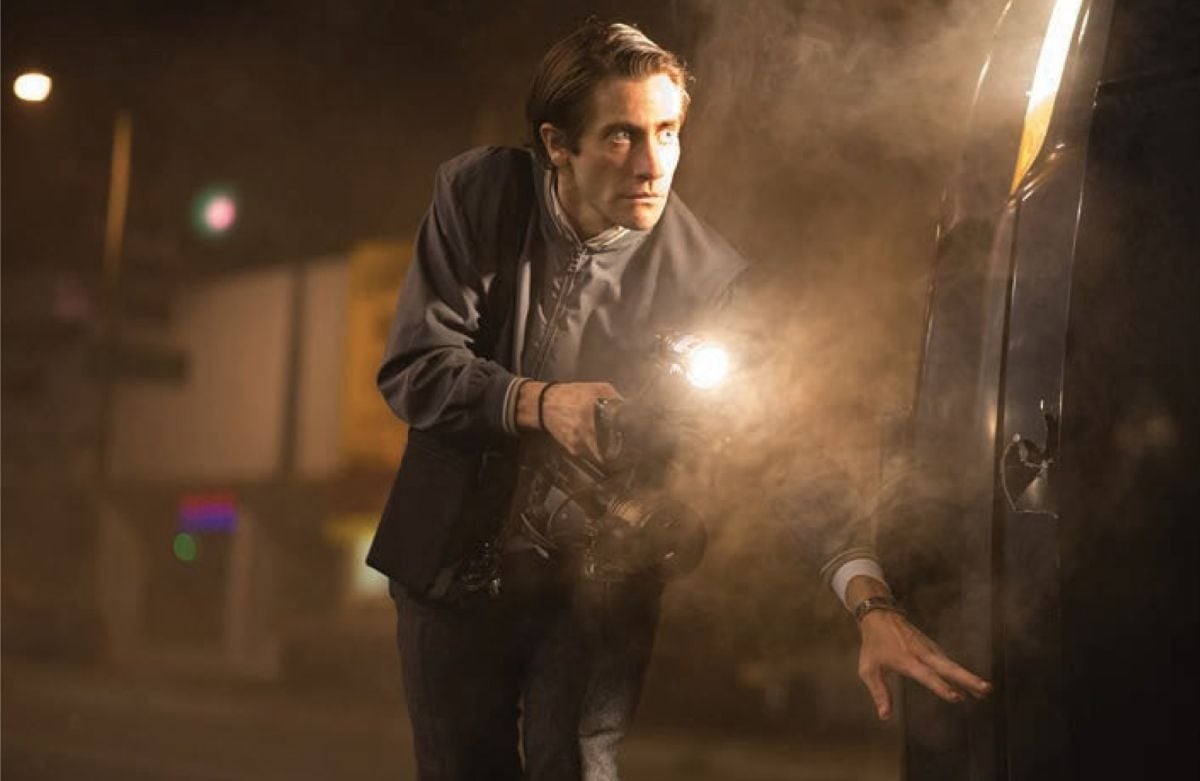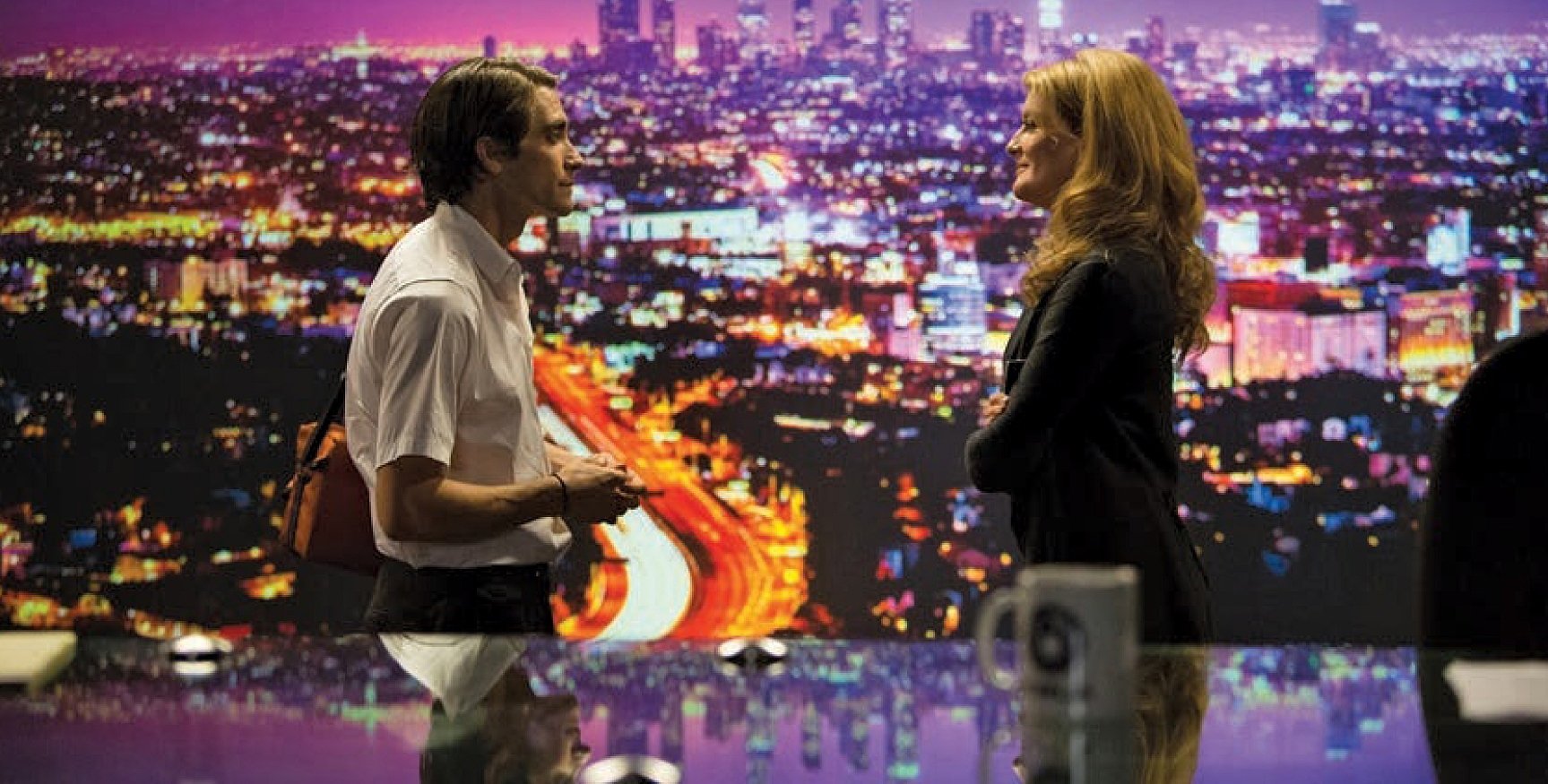
Breaking the News in Nightcrawler
Director of Photography Robert Elswit, ASC, details shooting inside a news station, lighting LA at night, and the hustle of a 26-day shooting schedule.
This article was originally published in AC, Nov. 2014
Unit photography by Chuck Zlotnick
Louis Bloom (Jake Gyllenhaal) is a sociopath with ambition, an autodidact and entrepreneur who transitions from a life of two-bit thievery into a career as a freelance cameraman whose grisly footage of traffic accidents and crime scenes raises the ratings of local station KWLA and the stock of station manager Nina Romina (Rene Russo) — as well as the hackles of the Los Angeles Police Dept. As his business booms, Lou brings on an intern, Rick (Riz Ahmed), with whom he scours the night and unhesitatingly crosses the line from “news gathering” into “news making.”
Photographed by Robert Elswit, ASC, Nightcrawler marks the directorial debut of Dan Gilroy, who also wrote the script. Among the film’s producers was the director’s brother Tony Gilroy, with whom Elswit had worked on Michael Clayton, Duplicity and The Bourne Legacy (AC Sept. ’12). AC caught up with Elswit over the phone while he was in London prepping Mission: Impossible 5, after having completed Nightcrawler’s 2K digital grade.
The grading was done with Blackmagic Design’s DaVinci Resolve at Company 3 in Santa Monica, where colorist Sofie Borup worked under the supervision of ASC associate member Stefan Sonnenfeld. Gaffer Michael Bauman also spoke with AC in a separate interview.
American Cinematographer: Nightcrawler goes to some very dark places, both literally and figuratively.
Robert Elswit, ASC: Danny [Gilroy] wanted [to capture] a Los Angeles that he had never seen in a movie before. He didn’t want to make a ‘downtown movie.’ He wanted it to be the [San Fernando] Valley, West Hollywood, places like that. We couldn’t afford and we didn’t have time to do giant lighting setups for night-exterior work, so I knew we had to find locations where I could just augment what was in the background and light the foreground. We shot with an Alexa [XT, which recorded ArriRaw to internal Codex mags], except for the day interiors and exteriors, which we shot on Kodak [Vision3 200T] 5213 because we wanted them to look a little different [from the night scenes].
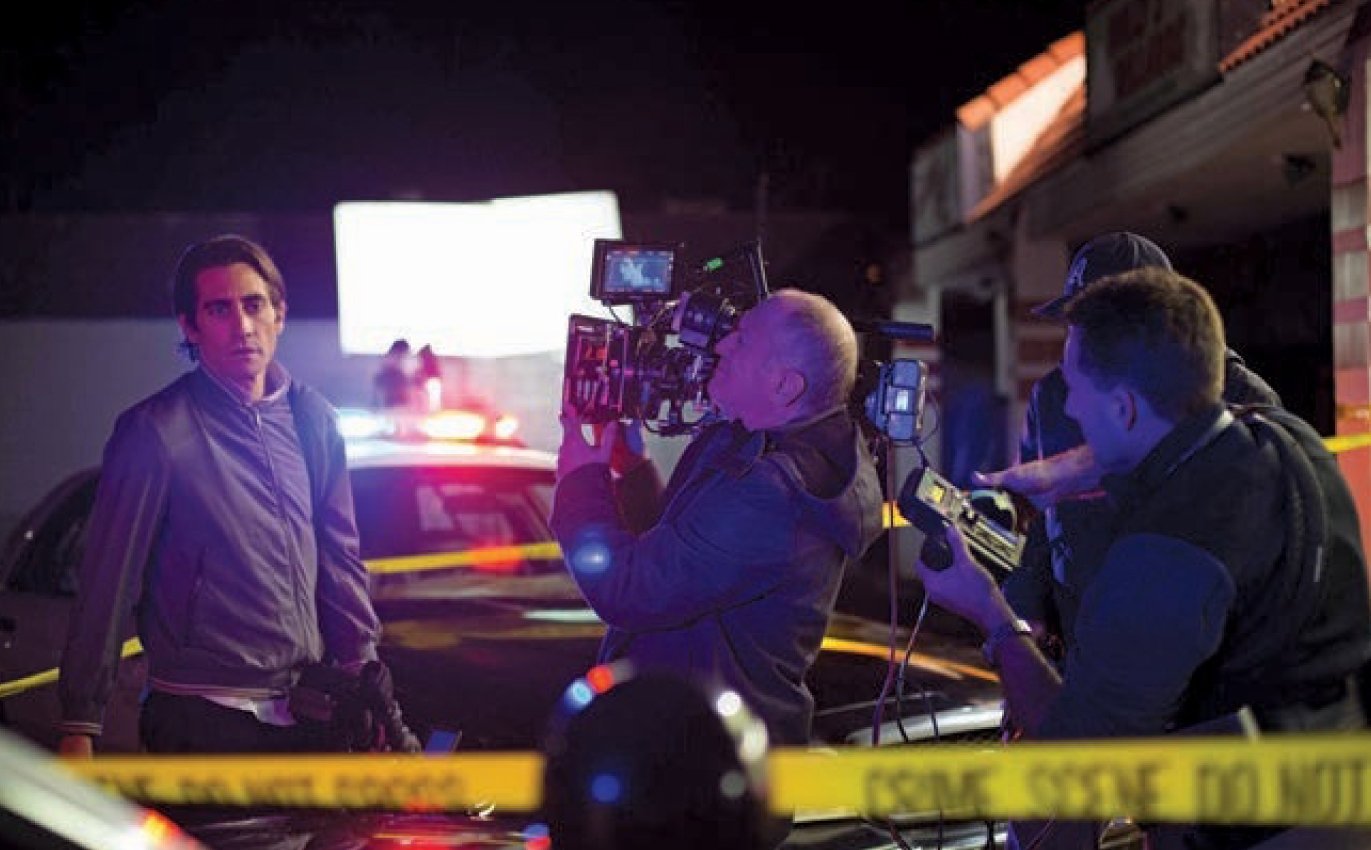
How many days did you have to shoot the film?
Elswit: We only shot 26 days, 24 of which were nights. The biggest problem from a logistical standpoint was there were far too many locations — I think it was 44. There was almost never a day when we stayed in one place; we were on the run the whole time. I hate to be so blunt about it, but a lot of what I was doing was just trying to make sure that we finished the work that was scheduled each day. We simply couldn’t go over, we couldn’t leave anything behind and we couldn’t skip anything. With limited resources, finding simple and imaginative approaches to lighting and storytelling becomes essential — and as we all know, this is not always a bad thing.
Did it help keep things on schedule to be working with a familiar crew?
Elswit: It always helps to work with people you’ve worked with before, especially people like [1st AC] Erik Brown, [A-camera/Steadicam operator] Andrew Rowlands and [gaffer] Michael Bauman. We had to work very simply, and it was something we had to plan very carefully.
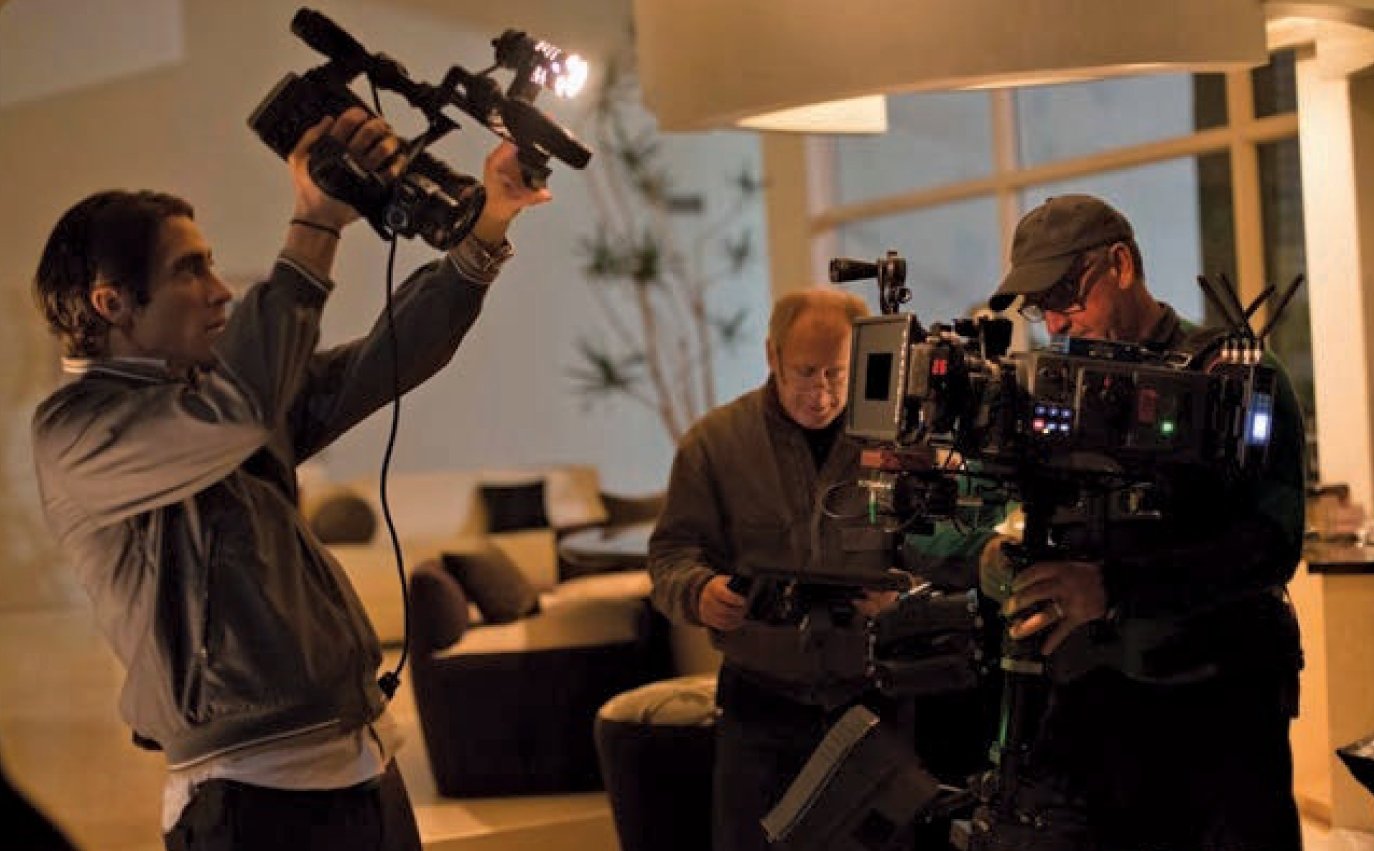
What sort of lighting fixtures did you carry?
Elswit: It was not a lot. What was a big help were Cineo [TruColor HS and LS] units. They’re very lightweight and they don’t take a lot of electricity. A lot of what we were doing was simulating streetlight; the background would be lit by the practicals, and then, on the streetlights we were standing near, we would put one or two Cineos [above the frame line] to backlight the area where we were shooting.
Michael Bauman: We used the Cineos with both 3,200K and 5,500K phosphors. Most of the movie was under 10 foot-candles, so we went with a lot of smaller-profile extrusions with LEDs that we could just dim to a level we liked. We made our own panels with [LiteGear] LiteRibbon that we could tape to the walls. We also used [Lowel] Rifas and the occasional Kino Flo.
Our main tools were Arri L7-C [colortunable LED Fresnels] — those are great lights. With one fixture, we could [emulate] metal halide or sodium, or just go tungsten, or make a police gag. I think of all the other ways we’ve had to do these effects, and it would have been really hard on Nightcrawler without that light.
Another great tool was the Powerful Battery Solutions system, which is made by a gaffer, Joe Colangelo, and allowed us to run lights without a generator. I only had two guys in the electrical department, so that was the perfect solution. The batteries are pretty small, so we could hide them behind cars and trashcans.

Where did you shoot the scenes set inside the news station?
Elswit: We were able to shoot in [local L.A. station] KTLA’s actual newsroom during certain periods of time when they weren’t that busy, but we couldn’t really change their lighting. We just tried to augment what was already there, which was fluorescent lighting for the most part. The studio that we used for most of the interior was KCET’s old facility, which is on Sunset and has been around since the silent era. There was a lot of stuff [left behind by KCET] that looked a bit period and slightly rundown, which fit the image of the television station [in the film].
How did you approach Lou’s apartment? Each scene in there is set at a distinct time of day.
Elswit: It was important to Danny that [the scenes in the apartment] feel like a very specific time of day and not just ‘day interior.’ When the cops come in the afternoon, it looks different than it does when Lou watches the early morning news after staying up all night. It’s about the quality of light and the color temperature; it’s cold and dark outside the window at dawn, and later on it’s brighter and warmer.
That was the one set that was built. We had a wonderful production designer, Kevin Kavanaugh. There was a wall built outside the [set’s] window, and I used [Arri M40 and M18] HMIs outside the window, trying to balance the wall in the background to make it feel like the windows were doing all the work. It was about controlling that relationship between inside and outside — those are the cues that tell you what time of day it is.
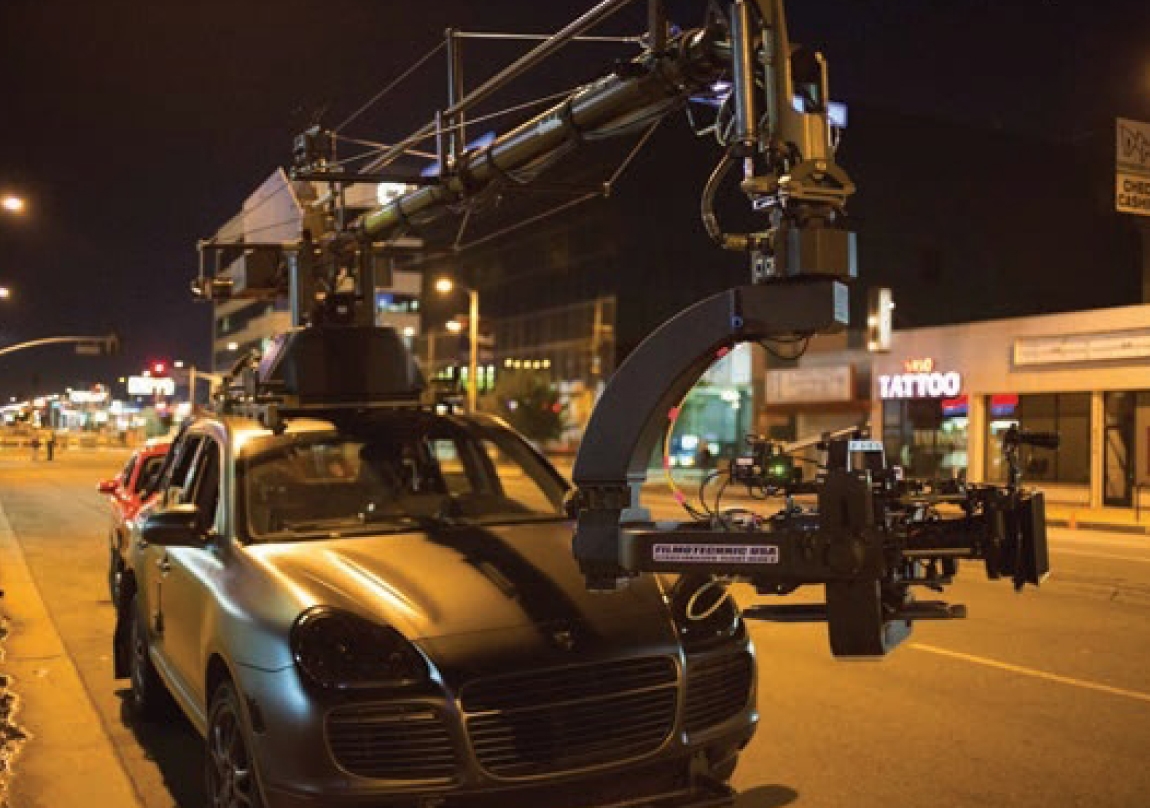
There’s a lot of nighttime driving in the movie. How did you light the actors inside the car?
Bauman: We ordered some stainless-steel drywall mud pans from Amazon, added VHO Pro 120 X6 [LiteRibbon] to the inside, and diffused the exterior with Full Grid, which gave us a long, narrow and incredibly durable light to mount on the cars. We also added small 2-to-4-inch strips of LiteRibbon and LiteStix inside the car. Everything was hybrid so we could mix colors; to control it all, we ran the fixtures off a 24-channel, 2-amp LiteDimmer, which was [controlled via] an iPad running Luminair from Synthe FX. The actors and camera crew would be working all over the car, and we could adjust the lighting remotely so we weren’t stepping on top of them.
What were some of the rigs you used to get those driving shots?
Elswit: [We used] pretty simple, straightforward hood and tray mounts, and we did some handheld in the back seat and the front seat. Part of our prep was deciding, ‘What are we doing in each of these scenes?’ We tried to approach each scene slightly differently because so much of [the movie] is in the car. And we tried to find locations where we could see stuff out the windows while driving along, which you get in the Valley a little bit easier than anywhere else; it’s easier to control the traffic with cops and rolling [lock-ups].
For the big chase sequence at the end of the movie, we put the car in the Biscuit rig [from Allan Padelford Camera Cars] to shoot some of the interior work. We also did a free drive for a couple of moments, and we got some profile shots from the Pursuit Systems [Porsche Cayenne Turbo camera car rigged with a Filmotechnic Flight Head V].
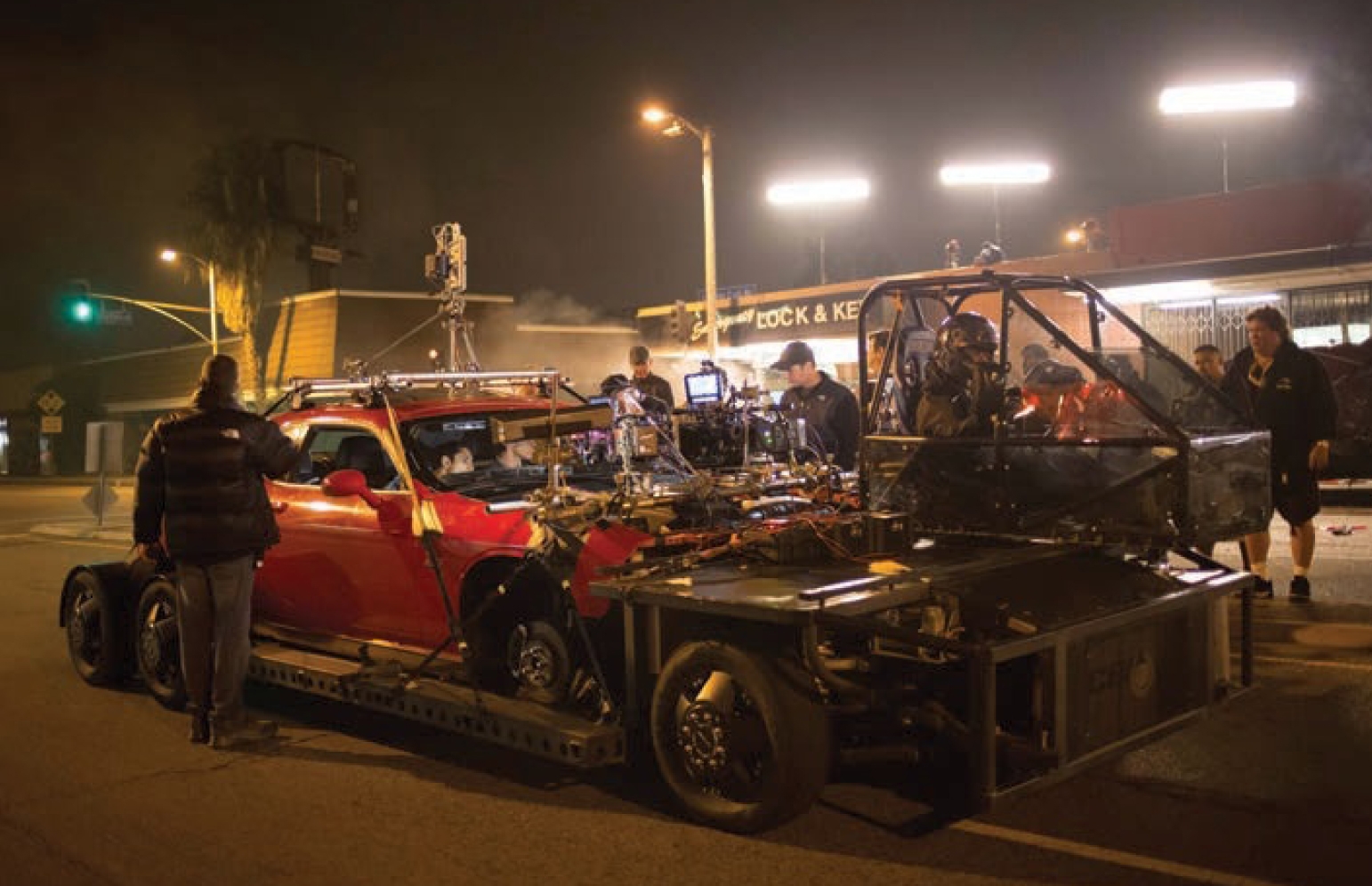
How did you manage to accomplish that chase sequence within your tight schedule?
Elswit: Mike Smith, the stunt coordinator and second-unit director, and second-unit cinematographer Chris Moseley put together a very simple and economic plan for shooting the stunts, and they did a fantastic job of executing it. It was important to us that the geography of the chase be clear, and that for storytelling reasons it would be experienced as much as possible from Lou and Rick’s point of view in their car. Mike and Chris pulled this off in only two nights and still made it exciting, and it blended seamlessly with the first-unit material it was intercut with. Because of their terrific work and [Dan’s brother] John Gilroy’s superb edit, it holds its own with any big-movie action sequence
What drew you and Dan Gilroy to the widescreen 2.40:1 aspect ratio?
Elswit: Danny wanted to feel that there’s something horizontal about Los Angeles. There’s not a lot that’s vertical to the city, and he really wanted that long, linear landscape to be part of the movie. L.A. can be so generic-looking sometimes; it looks like so many other places, or like nothing distinctive. But [Gilroy] was adamant about finding places that really were unique, or at least different. A lot of it was in the Valley just off of Ventura Boulevard on either side of Studio City.
We shot [spherical], which gave us a little more depth of field inside the car. We extracted 2.40:1 from the Alexa; that gives you a little more ‘grain,’ a little more noise, which is okay. I had a set of the old Panavision Super Speeds and Ultra Speeds [ranging from 17-100mm]. We also carried an Angenieux [Optimo 15-40mm T2.6] for some handheld and Steadicam shots, and a [Panavision] Primo 11:1 [24-275mm T2.8] for some long-lens shots. We got it all from Panavision Woodland Hills.
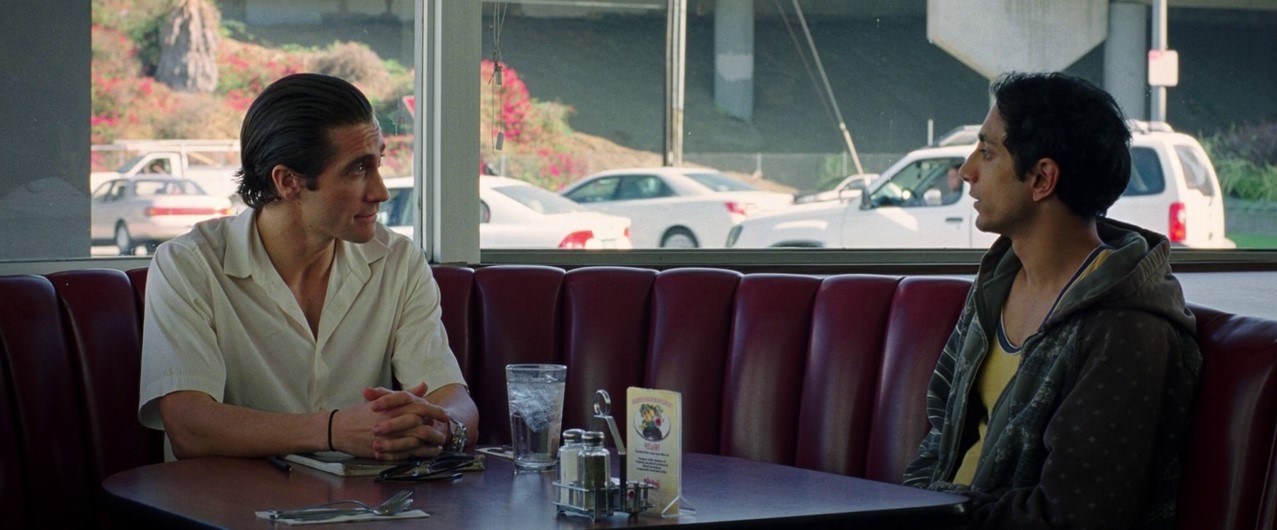
Were you and Gilroy drawn to any particular focal lengths?
Elswit: Not really. Most of it really was, ‘How do we do this as simply as we possibly can?’ I’d say our template was every Sidney Lumet movie. It was character- and dialogue-driven, we were in real locations that were easy to work in, it was simple coverage with only a few takes, and we moved very quickly throughout the whole thing. We had too many locations and too few days to do it any other way.
It always comes down to spending enough time in prep, no matter how big or small [the production] is. The script was solid — it wasn’t going to change — and Danny and I had the luxury of being able to spend weeks and weeks wandering around, talking the entire movie through from beginning to end, over and over again. We all know, if you try to get to the set and you don’t have a plan, you really are asking for it.
TECHNICAL SPECS
2.40:1
Digital Capture and 3-Perf Super 35mm
Arri Alexa XT, Panavision Millennium XL2
Panavision Super Speed, Ultra Speed, Primo; Angenieux Optimo
Kodak Vision3 200T 5213
Digital Intermediate
You'll learn much more about Elswit's career and body of work in this profile.
